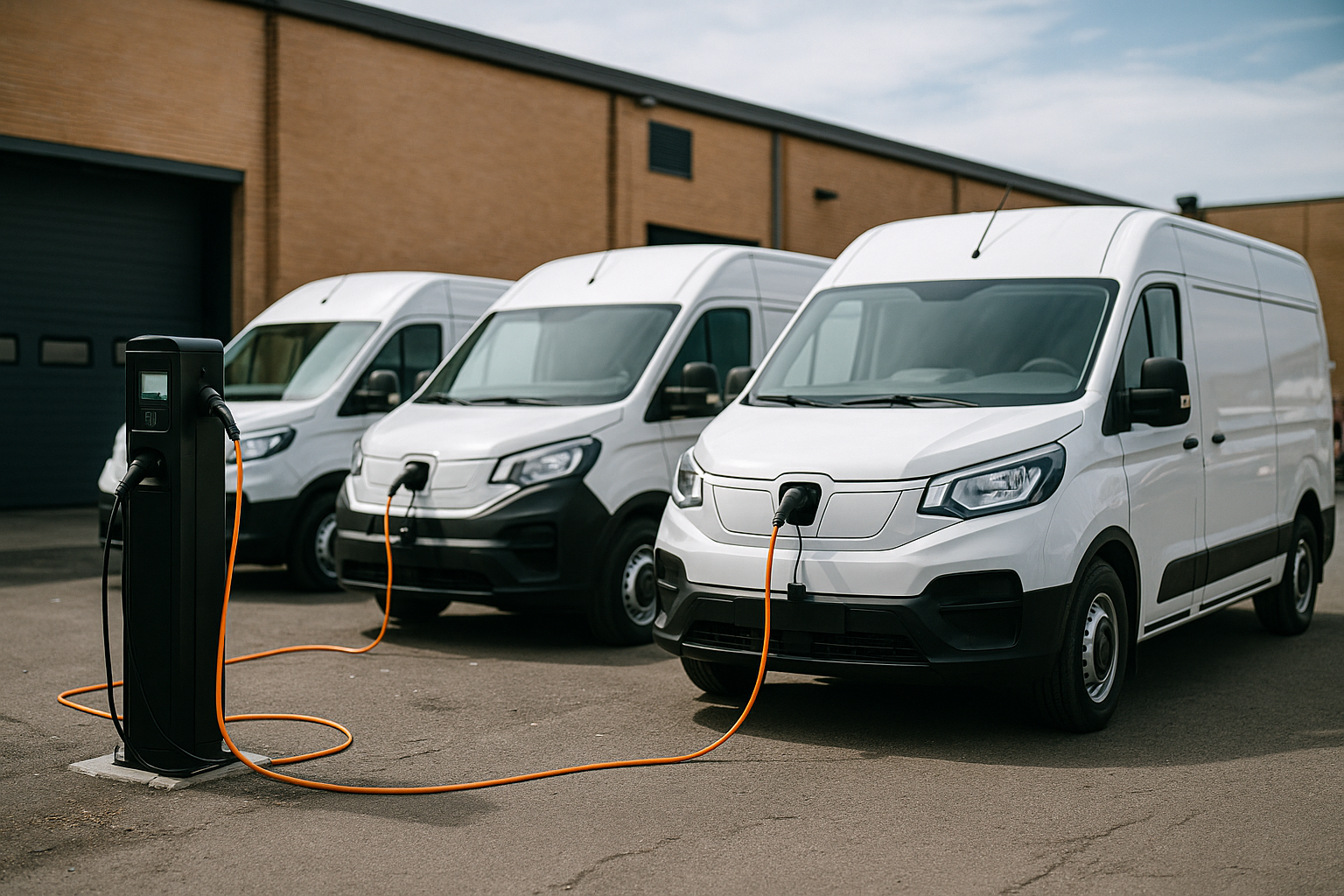Electric Fleets: The Secret Lies in How You Charge, Not Just What You Drive
A practical guide for small and mid-sized businesses looking to save with private charging and smart solutions.

Electromobility is no longer exclusive to big corporations. Today, small and mid-sized businesses with delivery, transport, or service fleets can make a smart transition to electric vehicles (EVs)—as long as it’s backed by well-planned charging infrastructure.
The secret isn’t just the vehicle—it’s how you recharge it.
The Hidden Problem with Public Charging
Relying solely on public chargers can mean high costs, wasted logistics time, and unpredictable experiences for drivers. That’s why more companies are installing private charging infrastructure directly at their operations centers.
This decision provides full control over the charging process, eliminates downtime, and significantly reduces operating costs.

How Much Can a Fleet Save?
According to the International Energy Agency (IEA) and data from the Mexican market, small or medium fleets can save up to 40% in energy costs by managing on-site charging—especially when paired with scheduling systems or energy storage.
Charging during off-peak hours (when electricity is cheaper) further increases savings per charge cycle.

Key Benefits of Private Charging Infrastructure
- Reduced operational costs: Full control over when and how you charge.
- Higher productivity: Scheduled nighttime charging prevents work disruptions.
- Traceability and monitoring: Smart platforms provide real-time energy usage per vehicle.
- Energy independence: With QiOn’s batteries, operations can continue during outages or grid saturation.
QiOn Solutions for Small and Mid-Sized Fleets
QiOn provides robust, flexible chargers designed for commercial environments:
- The Qube: A mobile DC charger up to 80 kW—perfect for logistics yards or shared fleet spaces. Easily relocated as needed.
- The Boqs: A compact DC charger (20/30/40 kW), ideal for businesses with limited space or looking for quick, simple installation.
- ThunderCell 235 kWh: An energy storage system that enables vehicle charging anytime—even during grid congestion or to reduce electricity costs.
These solutions integrate with monitoring software, allow remote control, and are compatible with mixed-vehicle fleets.
Is It Worth the Investment?
Absolutely. Companies that install on-site charging not only save money—they gain autonomy, operational control, and a real competitive edge in an increasingly demanding market.
Private charging infrastructure is no longer reserved for large corporations. Today, small and mid-sized companies have access to high-tech solutions tailored to their scale and budget.
Sources
- International Energy Agency (IEA) – Reports on charging infrastructure, EV adoption, and fleet operating costs https://www.iea.org
- Energy Agency of the State of Puebla (AEEP) – Documentation on hourly electricity rates and off-peak charging benefits https://energia.puebla.gob.mx
- BloombergNEF EV Outlook (2023) – Projections for EV growth in emerging markets like Mexico https://about.bnef.com
- CFE Regulations – GDMTH Time-Based Tariff (Medium Voltage) – Info on Mexico’s electricity rates and how charge timing impacts businesses https://www.cfe.mx
